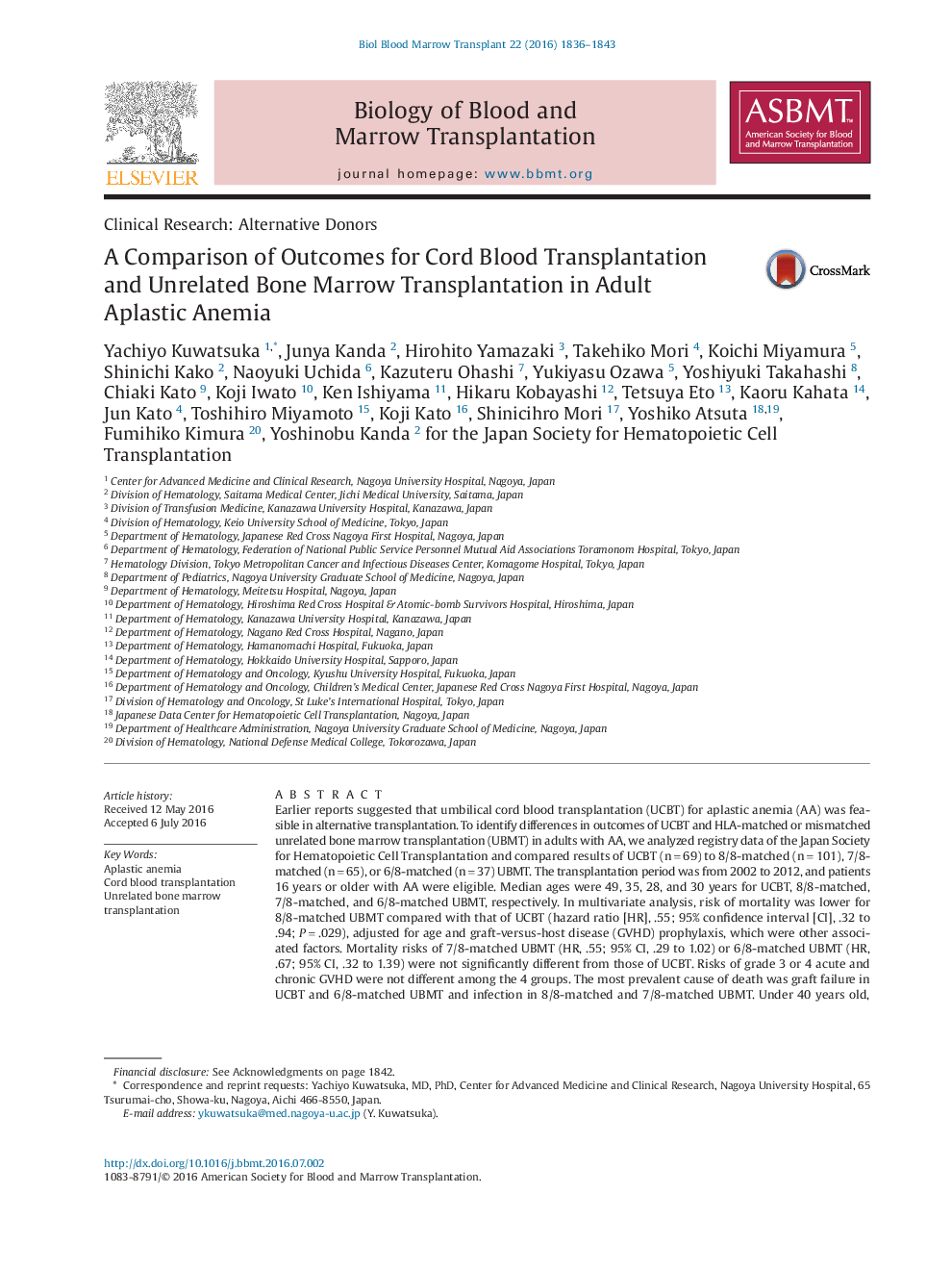| Article ID | Journal | Published Year | Pages | File Type |
|---|---|---|---|---|
| 5524555 | Biology of Blood and Marrow Transplantation | 2016 | 8 Pages |
â¢Mortality of umbilical cord blood transplantation was higher than that of 8/8-matched unrelated bone marrow transplantationâ¢Survival of umbilical cord blood transplantation was not statistically different from 7/8-matched unrelated bone marrow transplantationâ¢The outcome of umbilical cord blood transplantation for adult aplastic anemia was not poor for younger adults
Earlier reports suggested that umbilical cord blood transplantation (UCBT) for aplastic anemia (AA) was feasible in alternative transplantation. To identify differences in outcomes of UCBT and HLA-matched or mismatched unrelated bone marrow transplantation (UBMT) in adults with AA, we analyzed registry data of the Japan Society for Hematopoietic Cell Transplantation and compared results of UCBT (nâ=â69) to 8/8-matched (nâ=â101), 7/8-matched (nâ=â65), or 6/8-matched (nâ=â37) UBMT. The transplantation period was from 2002 to 2012, and patients 16 years or older with AA were eligible. Median ages were 49, 35, 28, and 30 years for UCBT, 8/8-matched, 7/8-matched, and 6/8-matched UBMT, respectively. In multivariate analysis, risk of mortality was lower for 8/8-matched UBMT compared with that of UCBT (hazard ratio [HR], .55; 95% confidence interval [CI], .32 to .94; Pâ=â.029), adjusted for age and graft-versus-host disease (GVHD) prophylaxis, which were other associated factors. Mortality risks of 7/8-matched UBMT (HR, .55; 95% CI, .29 to 1.02) or 6/8-matched UBMT (HR, .67; 95% CI, .32 to 1.39) were not significantly different from those of UCBT. Risks of grade 3 or 4 acute and chronic GVHD were not different among the 4 groups. The most prevalent cause of death was graft failure in UCBT and 6/8-matched UBMT and infection in 8/8-matched and 7/8-matched UBMT. Under 40 years old,survival of UCBT was similar to that of UBMT (76%, 79%, 83%, and 83% for UCBT and 8/8-matched, 7/8-matched, and 6/8-matched UBMT, respectively, at 3 years), adjusted for transplantation period, which was another associated factor; however, for ages over 40 years, that of UCBT tended to be lower (47%, 64%, 64%, and 75% for UCBT, 8/8-matched, 7/8-matched, and 6/8-matched UBMT, respectively, at 3 years). To conclude, these data suggest that UCBT could be an alternative treatment option for younger adults when matched sibling or adequate UBMT donors are not available.
